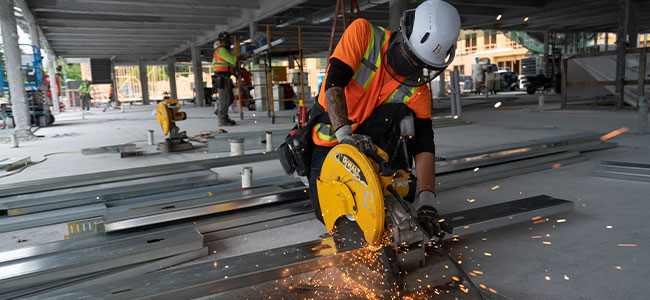
Prioritizing Safety from the Top Down
The world of worker safety is redefining head protection as it makes the shift from traditional hard hats to comprehensive safety helmets in construction.
- By Ryan Barnes
- Sep 06, 2023
To prioritize the safety of employers and employees, it is crucial to reevaluate the current head protection available to industrial workers.
Traditionally, construction tradespeople and industrial workers have relied on conventional hard hats. While these hard hats primarily offer protection against falling objects, they fall short in terms of safeguarding workers against other potential head injuries resulting from falls, slips, and trips. Therefore, they require more comprehensive head protection than what traditional hard hats can provide.
Construction sites inherently pose risks. According to the U.S. Bureau of Labor Statistics (BLS), in 2020, construction laborers had a higher incidence rate of nonfatal falls, slips, or trips (52.5 cases per 10,000 full-time workers) compared to the average for all workers (22.9 cases). This disparity comes as no surprise, given the multitude of hazards present at construction sites, ranging from falling objects to electrical and chemical exposures.
The Helmet Overhaul
Falls rank as the third leading cause of fatal incidents in the construction industry. According to the Occupational Safety and Health Administration (OSHA), there were 1,008 documented fatal falls in the United States construction industry in 2020, accounting for approximately 35 percent of all construction-related accidents. Considering that more than half of the construction workforce operates on scaffolds, significantly increasing the risk of falls from heights and associated traumatic brain injuries (TBIs), this is no surprise.
In reaction, the industry is shifting its approach to head protection. For more than a century, the industry has relied on the traditional hard hat, which today must comply with the American National Standard for Industrial Head Protection (ANSI) Z89.1 Type I standard. However, when it comes to impact protection, Type I hard hats are designed only to reduce the force of impact from the top of the head—typically from falling objects.
Now, various industrial-related industry decision makers, from plant operators to construction safety officers and other professionals, are moving toward the new ANSI Z89.1 Type II Safety Helmet as part of their personal protective equipment (PPE) arsenal.
This article originally appeared in the September 2023 issue of Occupational Health & Safety.